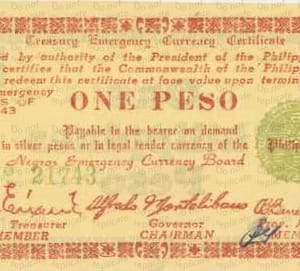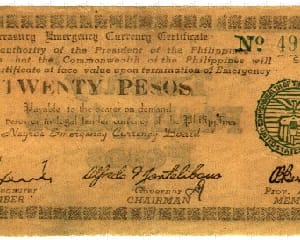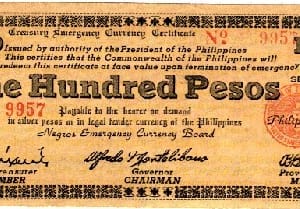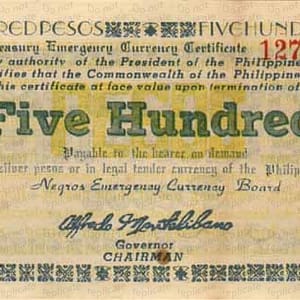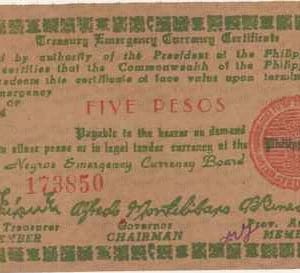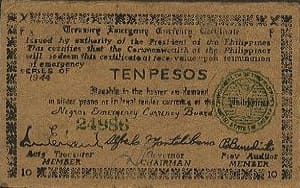On January 14, 1943, the submarine USS GUDGEON surfaced off Catmon Point and Maj. Jesus Villamor came ashore. It was his mission to set up an intelligence network in the Philippines.
Villamor’s next step was to establish a civil government by appointing Alfredo Montelibano, former Mayor of Bacolod, as Governor of Free Negros. This appointment was confirmed by President Quezon on June 9, 1943 when he designated Montelibano Governor of the Province of Negros, consisting of Negros Occidental, Negros Oriental and the sub-province of Sequijor.
To finance the new government, 700,000 pesos was borrowed from wealthy plantation owners by Governor Montelibano, until permission could be obtained from President Quezon to print emergency currency.
Since the Members of pre-surrender currency committees were all in Japanese controlled cities, President Quezon on July 11, 1943 created the Negros Emergency Currency Board composed of the following officials of the newly organized government. Governor Alfredo Montelibano as Chairman, with Acting Provincial Treasurer Pedro Elizalde and Provincial Auditor Alfredo Benedicto as Members.
Quezon authorized the printing of approximately 150,000 pesos per month for operations. Additional funds were requested for military funding, but MacArthur did not authorize this request.
Printing started on September 18th, 1943 near Pagnatangan. On May 31st, 1944 a second printing press was installed near Tolong. This press printed only 1 Peso notes (#S668-S671). On June 1, 1944 Acting Provincial Auditor Nicasio Villarin replaced Benedicto as a Member of the Currency Board, but for the balance of 1944 all notes continued to be printed with Benedict’s signature. The 1945 series has Villarin’s signature.
Almost any type of paper available was used for printing. The greater portion of it was derived from commercially manufactured brown paper bags. The white paper used at Tolong was brought in by submarine.
Printing operations ended on May 8, 1945. By that time a total of 40,128,539 pesos had been printed, of which all but 8,346,000 had been issued. Unissued notes were ordered destroyed.

